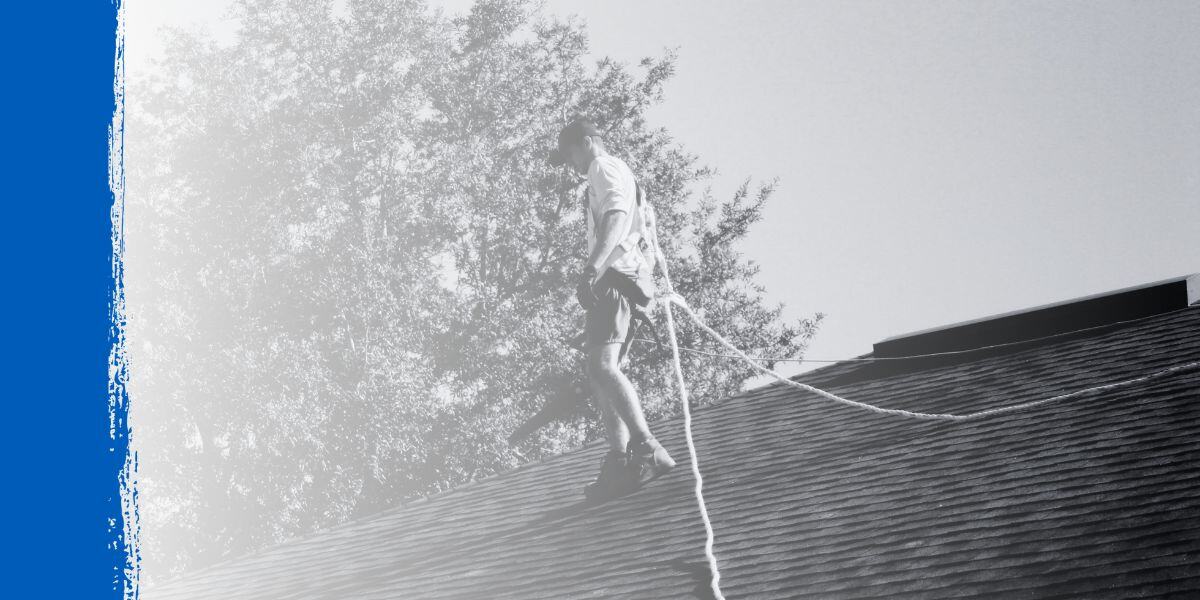Winter can take a serious toll on your roof, causing issues that range from annoying leaks to structural damage. Ice, snow, and freezing temperatures all contribute to problems that, if ignored, could lead to costly repairs. However, understanding the most common winter roofing problems and how to address them can save you time, stress, and money.
This article covers the top three issues homeowners face during the colder months and offers practical solutions to fix them. Keep your roof in top shape with these actionable tips and reliable materials for all your roofing needs.
Highlights:
- Ice dams cause water backup and leaks but can be prevented with insulation and proper ventilation.
- Excessive snow weight leads to sagging and structural issues—remove it safely and reinforce your roof.
- Damaged flashing from freeze-thaw cycles allows water leaks—inspect and replace it promptly.
Ice Dams
Ice dams form when heat escapes from your attic, melting snow on the roof. As the water runs down and refreezes at the edge, it creates a barrier that blocks proper drainage. This can lead to leaks, water damage, and even mold.
Fix it:
- Improve attic insulation to minimize heat escape.
- Install or upgrade ventilation to maintain consistent roof temperatures.
- Apply ice and water shield products under shingles for added protection.
At LS Building Products, we offer top-quality roofing materials designed to help you prevent ice dams and protect your home during winter. With our expert advice and materials, you can ensure that your home stays safe throughout the season.
Snow Load Stress
Accumulated snow and ice can strain your roof, causing sagging or, in extreme cases, collapse. Watch for cracking noises, sagging areas, or new interior leaks, as these may signal stress.
Fix it:
- Remove snow buildup using a roof rake or call a professional.
- Reinforce the roof with durable materials designed for high loads.
Heavy snow can impact both residential and commercial roofing, and using durable materials is essential to avoid damage. Our roofing company offers reliable solutions for roofing projects, whether you're repairing an existing roof or installing a new one.
Don't let the winter snow stress your structure—our products include fresh plywood for reinforcement and water-resistant materials to keep your roofing work secure.
Leaks from Damaged Flashing
Flashing seals gaps around chimneys, skylights, and vents. Winter’s freezing and thawing cycles can crack or corrode these areas, allowing water to seep in.
Fix it:
- Inspect flashing regularly and replace it when signs of damage appear.
- Use weather-resistant materials and sealants for long-lasting durability.
Preventive Maintenance Tips
Proper preventive maintenance can protect your roof from costly winter damage. Here are three essential tips to help you get ahead of winter roofing problems:
Schedule Roof Inspections Before Winter
A thorough inspection before the winter season begins is critical. A professional roofing company can check for loose or missing shingles, damaged flashing, and weak spots that might become problems under heavy snow or ice.
Regularly visiting job sites is essential to ensure quality work and attention to detail. Whether it's roof leak repairs or structural assessments, professionals with experience repairing roofs can identify hidden issues, like small leaks or structural vulnerabilities, that are harder to spot. Taking action now ensures your roof is ready to handle winter weather.
Clear Debris from Gutters and Downspouts
Clogged gutters and downspouts lead to water pooling on your roof or spilling onto your foundation, creating ideal conditions for ice dams and leaks. Removing leaves and debris, especially in late fall, is essential for proper drainage.
Adding a gutter cleaning service or guards minimizes debris buildup and reduces maintenance effort.
Check Your Attic Insulation and Ventilation
Your attic is key to maintaining a healthy roof in winter. Poor insulation allows heat to escape, promoting ice dam formation, while inadequate ventilation traps moist air, causing condensation and roof damage.
Winter Roofing: Stay Ahead of the Weather
Winter roofing jobs—like handling ice dams, snow load stress, and flashing damage—can lead to costly repairs if not addressed promptly. Take preventive measures and use high-quality materials to protect your home.
FAQ
1. How can I tell if my roof is under too much snow load?
Signs include sagging areas, unusual noises, or water stains on ceilings. Clear snow promptly to avoid damage.
2. What is the best way to prevent ice dams on my roof?
Improve attic insulation and ventilation to keep roof temperatures even and prevent ice buildup.
3. Can I remove snow from my roof myself?
Yes, but use a roof rake and work safely from the ground. For heavy snow or steep roofs, hire a professional.
4. How often should I inspect my roof during winter?
Inspect your roof monthly or after major snowstorms to catch issues early.
5. What are some affordable solutions for winter roofing maintenance?
Sealing small leaks, adding insulation, and gutter cleaning are cost-effective ways to protect your roof.
.png?width=98&height=67&name=Logo%20(13).png)
.jpg) Top 3 Winter Roofing Problems & How to Fix Them" loading="lazy">
Top 3 Winter Roofing Problems & How to Fix Them" loading="lazy">
-1.jpg)

.jpg)


